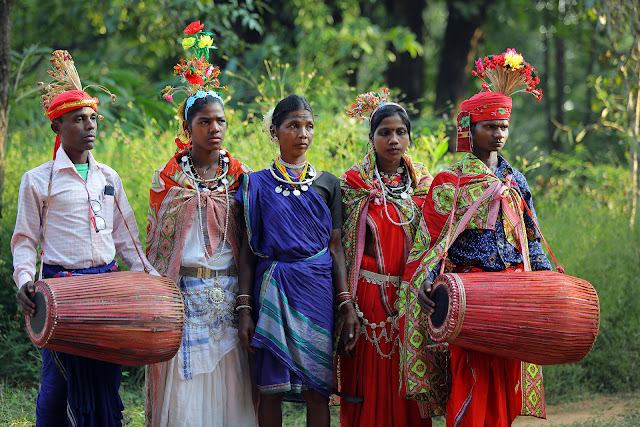The Abundant Nature of Kanha National Park
 |
| Water-grass at Tailing Dam in Kanha environs |
In the lists of the best national parks around the world, Kanha justifiably gets the top spot. A well-managed wildlife conservation programme, robust tourism and critical support from the local communities are key factors which ensure continued growth of Kanha National Park. Although most people come to Kanha to see the mighty Royal Bengal Tiger, a handful others are interested in the 'others' of the jungle - the many different types of birds and small animals and plants, all of which play critical roles within the ecosystem.
However, that is not all. Today, I would like to tell our readers about the magnificent and lush countryside of Kanha, a phenomenon which in itself is worthy of sincere attention despite stiff competition from its close cousin - the protected jungle. Inhabited by tribal communities who live in beautiful houses, criss-crossed by wooded pugdundees and nourished by gently winding creeks, a journey through Kanha country offers spectacular views and heartwarming experiences to those who are willing. The agricultural fields of Kanha offer colourful vistas based on the seasons of the year. Under the azure sky, a train of dark green hillocks pave way for fields of mustard yellow being tended by specks of human beings; hordes of colourful birds soaring across the sky make for a welcome distraction; and if you don't know the pristine smell of the jungle then you should head over here right away.
 |
| A bullock cart seat stored against the lime-washed wall of a country house |
The locals construct their residences in complete harmony with nature. Using naturally available materials like cow dung, hay straws and earthen kabelu, these country houses amalgamate perfectly material functionality and indigenous aesthetics. The materials used ensure natural insulation and help in regulating temperature, keeping it cool during the burning summers and warm during the biting winters. Oftentimes, the people share their spaces with the animals they have. Cows, Buffaloes, Goats, Pigs and Chicken live and feed in the aangan (central courtyard) as the human inmates populate the inner quarters.
 |
| People washing their cattle in the river |
Extremely hospitable and friendly, the locals receive their guests with much gusto and enthusiasm. I was fortunate enough to have been invited by a Baiga family for lunch and it was an experience I shall never forget. The meal consisted of kikad ki roti, kodo millets and pej. Simple and delicious. It goes without saying that to keep the company merry, there were rounds and rounds of Mahua - a sweet-smelling alcoholic beverage made by fermenting the Madhuca longifolia flowers, that we drank till our stomachs burst. During the meal, they shared with me their tribal origin myths which told the stories of their Gods, rituals and belief systems. I, on my part, pointed out the many similarities between their myths and the ones that derive from and form the bases of today's world religions. We parted with smiling faces and promises of meeting in the future.
 |
| Extended wooden facade with protruding logs used to store wood and other materials |
Given the concerns of environmental degradation, global warming and climate change, there's a lot that could be learned from lifestyles cultivated in this part of our country. Going forward, I believe, the ethos of responsible tourism must expand their scope to venture into the realms of material culture, cuisine, language and oral traditions, besides the usual go-tos of Tiger sightings, Jungle Safaris and the like. Wider cooperation between stakeholders viz. Jungle-lodges, Forest Department, Tourists and Local Communities is key for sustained and long-term prosperity of this beautiful symbiosis.


Comments
Post a Comment